
Modelling
Scope & Guideline
Transforming Ideas into Computational Realities.
Introduction
Aims and Scopes
- Computational Modeling Techniques:
The journal showcases a range of computational techniques including finite element analysis, machine learning, and simulation methods that are applied to various engineering problems. - Interdisciplinary Applications:
Research published in 'Modelling' spans multiple disciplines such as mechanical engineering, civil engineering, environmental science, and healthcare, demonstrating the interdisciplinary nature of modeling. - Optimization and Decision Support:
Many papers focus on optimization methodologies for improving system performance and decision-making processes, reflecting the journal's commitment to practical applications. - Data-Driven Approaches:
There is a consistent emphasis on data-driven modeling approaches, particularly the integration of machine learning and statistical methods to enhance model accuracy and reliability. - Real-Time and Predictive Modeling:
The journal includes studies that develop real-time and predictive models, emphasizing their importance in applications such as smart manufacturing, urban planning, and environmental monitoring.
Trending and Emerging
- Machine Learning Integration:
An increasing number of papers incorporate machine learning techniques into modeling processes, reflecting the growing importance of AI in enhancing predictive capabilities. - Sustainability and Environmental Modeling:
There is a notable rise in research focused on sustainability, with models addressing environmental impacts, resource management, and sustainable engineering practices. - Real-Time Data Utilization:
The trend towards real-time data utilization in modeling is on the rise, with applications in smart cities, real-time monitoring systems, and dynamic decision-making. - Complex Systems and Network Modeling:
Research examining complex systems and network interactions is trending, driven by the need to understand interconnected systems in areas such as urban planning and healthcare. - Digital Twin Technology:
The concept of digital twins is emerging as a significant area of interest, with applications in manufacturing and urban infrastructure, enabling real-time simulation and optimization.
Declining or Waning
- Traditional Analytical Methods:
There has been a noticeable decrease in papers relying solely on traditional analytical methods, as more researchers pivot towards computational and data-driven approaches. - Basic Simulation Techniques:
While foundational simulation techniques were once popular, the recent trend indicates a decline in their application, likely due to the rise of more sophisticated modeling frameworks. - Single-Disciplinary Focus:
Research that is strictly confined to a single discipline is becoming less common, with a growing preference for interdisciplinary studies that address complex, multifaceted problems. - Static Models:
The use of static models, which do not account for dynamic changes over time, is decreasing as researchers prioritize dynamic and adaptive models that better represent real-world systems. - Simplistic Optimization Models:
There is a waning interest in simplistic optimization models that do not incorporate uncertainty or variability, as more complex and robust models gain traction.
Similar Journals

Computation
Fostering innovation in computational research.Computation, published by MDPI, is an esteemed open-access journal that has been contributing to the fields of applied mathematics and computer science since its inception in 2013. With an E-ISSN of 2079-3197, this Swiss-based journal operates under a philosophy of free knowledge dissemination, allowing researchers, professionals, and students globally to access high-quality content without financial barriers. Recognized for its rigorous peer-review process, Computation is currently categorized in the Q2 and Q3 quartiles across significant domains, including Applied Mathematics (#181/635), Theoretical Computer Science (#52/130), and Modeling and Simulation (#138/324). As it converges towards 2024, the journal continues to attract innovative and impactful research aimed at advancing theoretical frameworks and practical applications within these disciplines. Joining the Computation community not only enriches individual research portfolios but also contributes to the broader conversation on computational methodologies and their applications in solving real-world problems.

NEW GENERATION COMPUTING
Shaping Tomorrow’s Computing Landscape TodayNEW GENERATION COMPUTING is a prominent academic journal published by SPRINGER, specializing in the dynamic fields of Computer Networks, Hardware and Architecture, Software Engineering, and Theoretical Computer Science. With a commitment to disseminating high-quality research since its inception in 1983 and extending its coverage to 2024, this journal occupies a vital role in advancing knowledge and innovation within these critical domains. Holding prestigious Q2 rankings in Computer Networks and Communications, Hardware and Architecture, and Software, as well as a Q3 ranking in Theoretical Computer Science for 2023, NEW GENERATION COMPUTING attracts significant contributions from scholars and professionals around the globe. Researchers will find its rigorous peer-review process ensures the publication of impactful studies, while students gain access to cutting-edge research that shapes contemporary computing practices. Though it does not offer open access, the journal remains an invaluable resource in the academic community, fostering collaboration and dialogue among experts aiming to push the boundaries of technology.
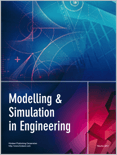
Modelling and Simulation in Engineering
Pioneering the Future of Engineering Through SimulationModelling and Simulation in Engineering is a pioneering open-access journal, published by HINDAWI LTD, and established in 2007. With a focus on advancing the fields of engineering, computer science applications, and modeling and simulation, this esteemed journal serves as a vital platform for researchers, professionals, and students alike. The journal has made significant strides in its academic contributions, reflected in its current categorization within the Q3 quartile in Computer Science Applications, Engineering (miscellaneous), and Modeling and Simulation as of 2023. With a Scopus ranking of 133 out of 307 in General Engineering and 183 out of 324 in Mathematics' Modeling and Simulation, it emphasizes the crucial interplay between theoretical research and practical applications. Each article published in Modelling and Simulation in Engineering undergoes a rigorous peer-review process, ensuring high-quality research dissemination. By maintaining an open-access format, the journal promotes global collaboration and accessibility, supporting the dissemination and advancement of engineering knowledge worldwide. With its headquarters located in the United States, the journal is truly positioned at the convergence of innovation and research.
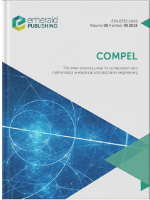
COMPEL-THE INTERNATIONAL JOURNAL FOR COMPUTATION AND MATHEMATICS IN ELECTRICAL AND ELECTRONIC ENGINEERING
Connecting Theory with Practice in Electrical EngineeringCOMPEL - THE INTERNATIONAL JOURNAL FOR COMPUTATION AND MATHEMATICS IN ELECTRICAL AND ELECTRONIC ENGINEERING is a leading peer-reviewed journal published by Emerald Group Publishing Ltd, dedicated to advancing the fields of computation and mathematical applications in electrical and electronic engineering. Since its inception in 1982, the journal has been a pivotal resource for researchers, professionals, and students alike, promoting innovative methodologies and contributing to the knowledge base within its scope. With a current impact factor reflecting its growing influence, COMPEL offers valuable insights across several quartile categories, allowing contributors to engage with important advancements in applied mathematics and computational theory. Although it operates under a subscription model, the journal ensures that accessible and impactful research reaches a wide audience. As it continues to converge towards its milestone in 2024, COMPEL remains an essential platform for those seeking to explore the interplay between complex computational challenges and engineering solutions.

International Journal of Interactive Design and Manufacturing - IJIDeM
Fostering Collaboration in Interactive EngineeringInternational Journal of Interactive Design and Manufacturing (IJIDeM), an esteemed publication by SPRINGER HEIDELBERG, has carved a niche in the domains of Industrial and Manufacturing Engineering and Modeling and Simulation. Established in 2008, this journal serves as a critical platform for disseminating cutting-edge research and practical advancements related to interactive design and innovative manufacturing processes. With an impact factor that places it within the Q2 and Q3 quartiles of respective categories, and Scopus rankings affirming its relevance, IJIDeM invites contributions that explore the crossroads of design, technology, and engineering. Researchers, professionals, and students alike will find valuable insights and collaborations through its pages, making it a vital resource for anyone seeking to enhance their understanding of interactive design principles in manufacturing contexts.
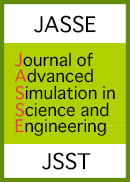
Journal of Advanced Simulation in Science and Engineering
Connecting Academics and Practitioners in Simulation TechnologyJournal of Advanced Simulation in Science and Engineering, published by the Japan Society for Simulation Technology (JSST), stands as a pivotal platform in the dynamic field of simulation technology, focusing on cutting-edge research and applications in science and engineering. With the ISSN and E-ISSN of 2188-5303, this journal aims to disseminate high-quality research that drives innovation and enhances understanding among practitioners, academics, and students alike. As an essential resource for those engaged in simulation methodologies, it explores a wide range of topics, including but not limited to computational modeling, virtual simulations, and their applications across various engineering disciplines. The journal is indexed in prestigious databases, aiming for a strong impact factor that reflects its commitment to scholarly excellence and relevance. Its open access policy further facilitates wider dissemination and accessibility of research findings, thereby fostering greater collaboration and advancement in the field. Researchers and professionals are encouraged to contribute their findings and insights, establishing the Journal of Advanced Simulation in Science and Engineering as a leading authority in advancing simulation technologies for future applications.
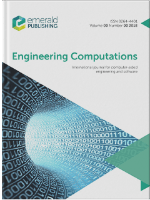
ENGINEERING COMPUTATIONS
Pioneering advancements in engineering through computational research.ENGINEERING COMPUTATIONS is a prestigious journal dedicated to advancing the fields of computational theory, mathematics, computer science, and engineering. Published by EMERALD GROUP PUBLISHING LTD, this journal plays a crucial role in disseminating innovative research and practical applications that address contemporary challenges in technology and engineering. With a solid impact factor and recognition in prestigious quartiles—Q3 in Computational Theory and Mathematics and Q2 in Engineering—ENGINEERING COMPUTATIONS serves as a vital platform for researchers, professionals, and students seeking to contribute to and benefit from cutting-edge advancements. The journal’s expansive timeline, offering insights from 1984 to 2024, ensures a rich historical perspective on the evolution of computational methodologies. By fostering a collaborative environment for rigorous research, ENGINEERING COMPUTATIONS enriches the academic community and inspires the next generation of innovators.
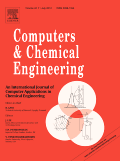
COMPUTERS & CHEMICAL ENGINEERING
Exploring the Synergy Between Chemistry and ComputingComputers & Chemical Engineering, published by Pergamon-Elsevier Science Ltd, stands at the forefront of research at the intersection of chemical engineering and computer science. With an ISSN of 0098-1354 and an E-ISSN of 1873-4375, this esteemed journal has been a vital resource since its inception in 1977, with coverage extending to 2025. It is categorized as Q1 in Chemical Engineering (miscellaneous) and Q2 in Computer Science Applications for 2023, highlighting its significant impact within these fields. Notably, the journal boasts impressive Scopus ranks, placing it in the 84th and 82nd percentiles for Chemical Engineering and Computer Science Applications, respectively. A treasure trove for researchers, professionals, and students alike, Computers & Chemical Engineering focuses on the latest trends and innovations in computational techniques, algorithm development, and their applications to chemical processes, ensuring an avenue for groundbreaking findings and collaborative dialogues. While not an open-access publication, it remains a critical reference point for those seeking robust, peer-reviewed research in the rapidly evolving landscape of chemical engineering and computational methods.

INFORMATICA
Fostering interdisciplinary collaboration for a brighter academic future.INFORMATICA, ISSN: 0868-4952, E-ISSN: 1822-8844, is a prestigious academic journal published by the Institute of Mathematics and Informatics, located in the Netherlands. Established in 1990, this journal has carved a significant niche in the fields of Applied Mathematics and Information Systems, holding a commendable Q2 ranking in both categories as of 2023. With a Scopus ranking of #68 in Applied Mathematics and #123 in Information Systems, INFORMATICA boasts an impressive percentile standing, demonstrating its high impact and relevance in contemporary research. The journal promotes rigorous scholarship, disseminating innovative research findings and methodologies that contribute to the advancement of mathematical and informatics theories and practices. Although it does not currently operate as an open-access journal, it provides invaluable resources for researchers, professionals, and students looking to deepen their expertise and knowledge in these dynamic fields. With a commitment to fostering academic exchange and interdisciplinary collaboration, INFORMATICA remains an essential platform for those committed to pushing the boundaries of knowledge in mathematics and informatics.

World Journal of Engineering
Innovating Solutions for Tomorrow's ChallengesWorld Journal of Engineering, published by EMERALD GROUP PUBLISHING LTD, stands as a premier platform for disseminating high-quality research across various engineering disciplines. Since its inception in 2014, the journal has built a reputation for its rigorous peer-review process and commitment to advancing knowledge in the fields of Civil and Structural Engineering, Electrical and Electronic Engineering, Geotechnical Engineering, Mechanical Engineering, and Mechanics of Materials. With its categorization in the Q3 quartile across multiple engineering domains and notable Scopus rankings, the journal positions itself as a valuable resource for researchers, professionals, and students seeking to stay abreast of innovations and critical developments in engineering. While the journal currently operates under a subscription model, its comprehensive scope ensures that it remains a vital reference point for contemporary engineering challenges and solutions throughout the United Kingdom and beyond.